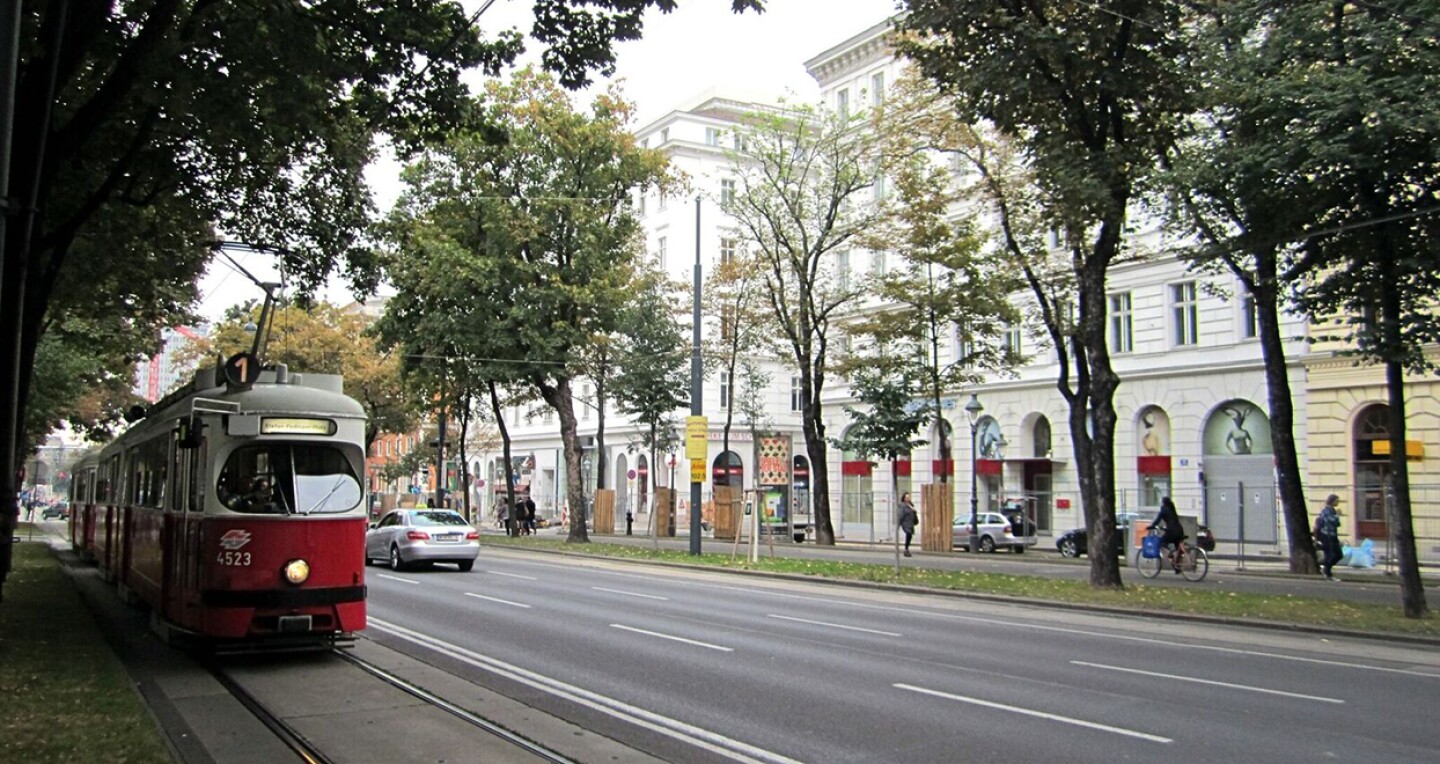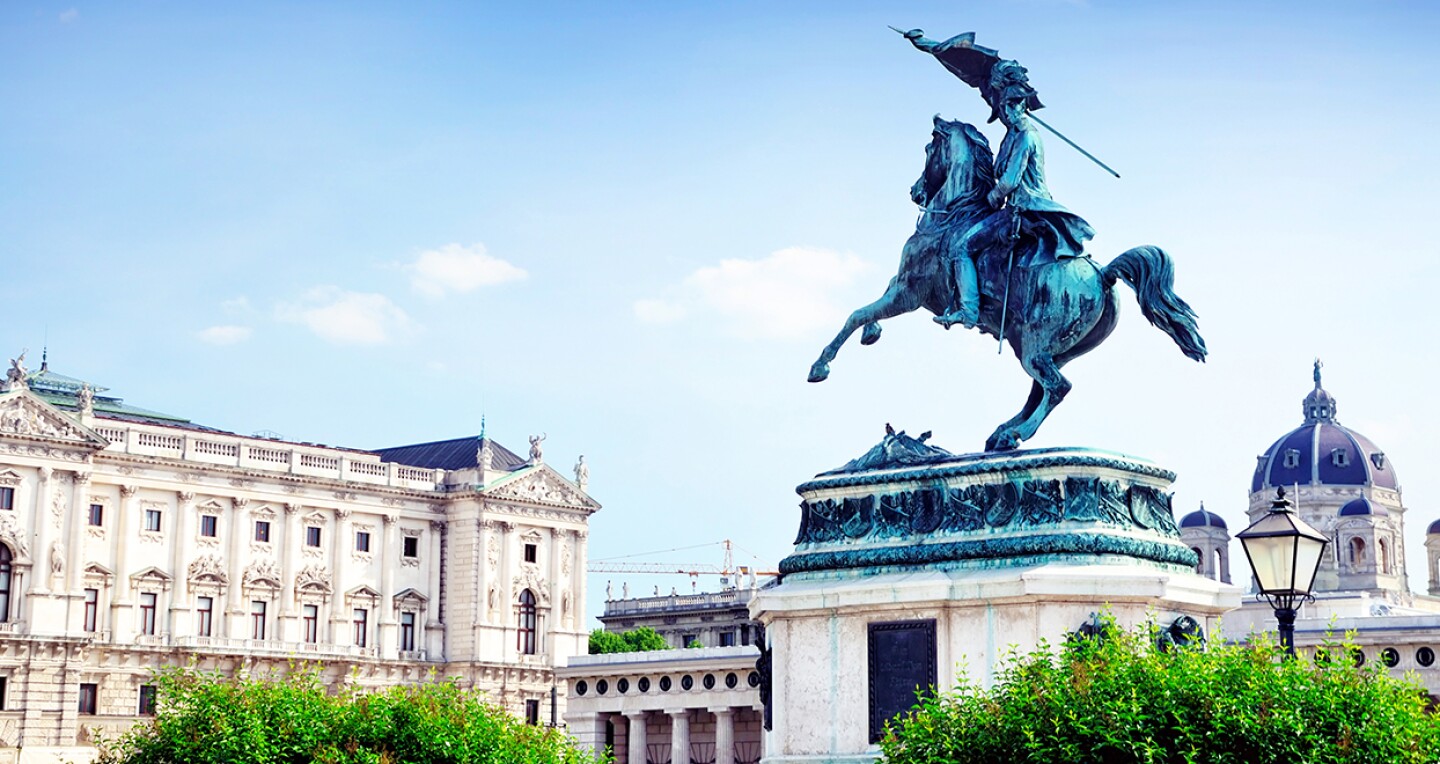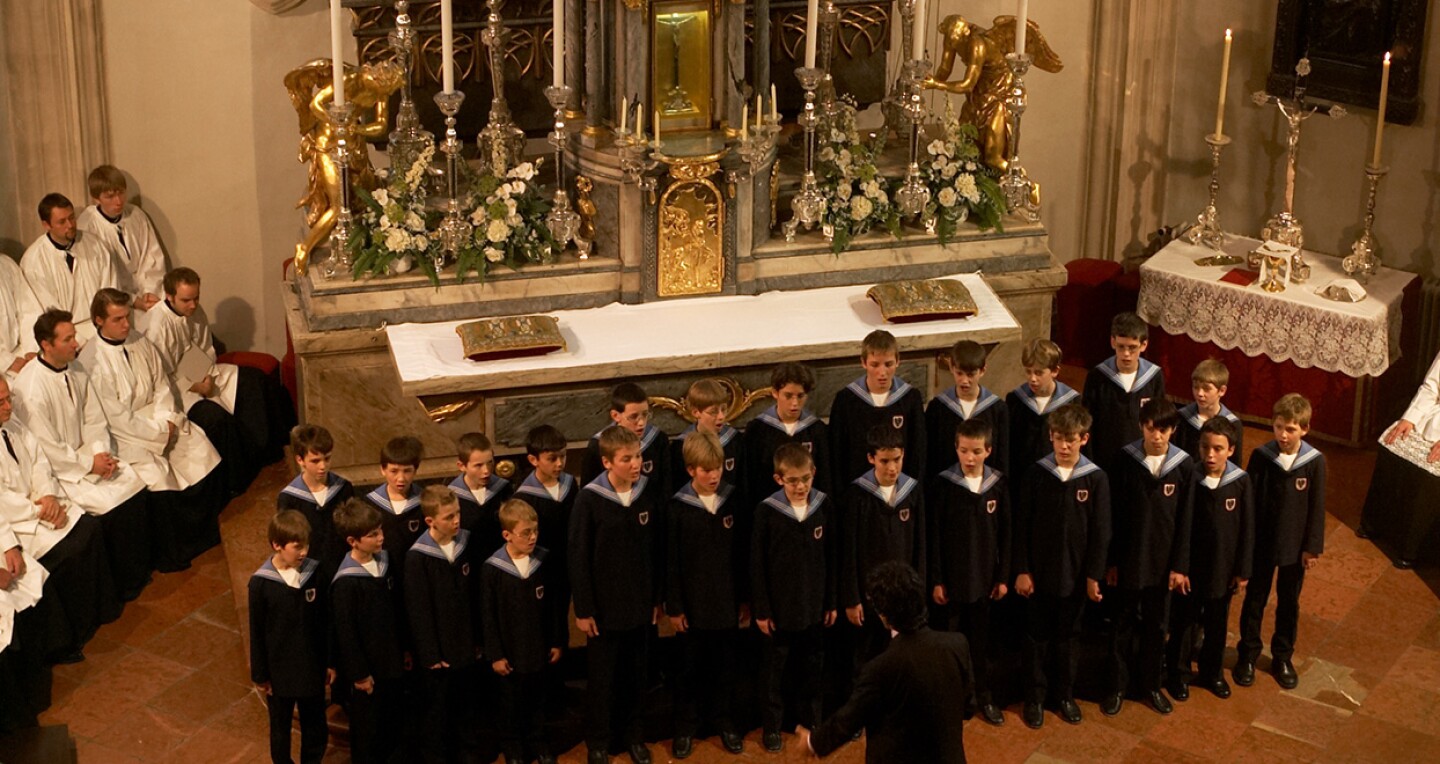Austria’s capital was, for more than 400 years, the seat of the Hapsburgs. The reminders of its glorious past are inescapable—the Ringstrasse lined with civic buildings, museums, and parks; the Schönbrunn Palace, the Hapsburgs’ grand summer retreat; and baroque churches with ornate interiors that reflect the wealth of their patrons.
The Austro-Hungarian Empire was unique in Europe for its remarkable diversity: Czechs, Germans, Italians, Poles, Slovenians, and many others all lived within its borders. This helped produce the intellectual ferment that marked much of Vienna’s history. Its leading thinkers—including Sigmund Freud, Adolph Loos, Gustav Klimt, and Gustav Mahler—shaped much of modern culture, in everything from architecture to economics, and music to philosophy.
The city is not, however, some museum piece focused on its past glory days. Check any list of the world’s most livable cities and odds are good that Vienna will be represented. What makes it appealing as a place to live also makes it a great travel destination: thriving cultural institutions, lots of green spaces, and, of course, the legendary coffee houses. Every day could be made better with a slice of Sacher torte.
The warm welcome you’ll receive in Vienna is not unlike the one you’ll experience on Lufthansa, which serves the city from 19 gateways in the United States. With the airline’s flight experience engineered around its passengers, they will get you to Vienna rested and ready to experience all the city offers.
Itinerary / 6 DAYS
PLAN YOUR TRIP
DAY 1Ride on the Ringstrasse
If what has attracted you to Vienna is that glittering period of the Hapsburg monarchy, the world of balls and operas, the Palais Coburg Residenz is a perfect choice. Located in a palace built from 1840 to 1845, the hotel’s 34 suites are old world in their décor with chandeliers and period pieces. If your tastes are more contemporary, Do & Co is a design hotel located in the historic center—right across from St. Stephens Cathedral. Turkish bedspreads pay a nod to both the owner’s roots and also the cosmopolitan side of Vienna.
Get your bearings by taking advantage of Vienna’s excellent public transportation system and hop aboard the streetcars that follow the route of the Ringstrasse (lines 1 and 2). Along the way you’ll pass the National Theater, the Kunsthistorisches Museum, and other sites you’ll likely want to return to over the next several days, as well as many 19th-century mansions. This overview of Vienna’s most famous boulevard will set you back only €2.20 ($2.58), and it’s included in the Vienna City Card (which is a purchase worth considering—you’re almost sure to get back its cost over the course of your trip).
Dine tonight at a restaurant in an unforgettable setting, Steirereck, in the city’s Stadtpark. There are both six- and seven-course tasting menus as well as an à la carte one. Whichever you choose, you’ll be served contemporary Austrian cuisine that uses local and seasonal ingredients.

PHOTO BY ANDREW NASH
DAY 2Art and Cake
Take a break from the art with lunch at Glacis Beisl, just a five-minute walk from the Kunsthistorisches Museum. The menu here sticks to Austrian and Hungarian classics—goulash, wiener schnitzel, dumplings—and there’s a lovely garden open during the warmer months.
This part of Vienna is known, appropriately, as the MuseumsQuartier as there is an abundance of museums here. Decide which ones you want to visit in the afternoon based on your interests. Choose from the Natural History Museum, facing the Kunsthistorisches, the Architekturzentrum Wien (with exhibits on leading Austrian and international architects), the mumok (modern and contemporary art), and the Leopold Museum, which focuses on early 20th-century artists including Gustav Klimt and Egon Schiele.
At the end of the day, treat yourself to Vienna’s most famous edible work of art: the Sacher torte. Two businesses have had a long dispute over which one is the true source of this chocolate-and-jam torte. At the end of a 25-year-long legal battle, the Hotel Sacher triumphed, but Demel still has its loyal following.

PHOTO BY ALXPIN
DAY 3The Good Viennese Life
The palace isn’t one building, but an entire complex with several squares, a library, and a monastery. Its oldest portions date from the 13th century while the newest were completed in 1913. The Sisi Apartments include artifacts related to Empress Elizabeth, commonly known as Sisi, whose glamorous life, tragic suicide of her son, and assassination by an Italian anarchist were closely followed by her subjects. The Imperial Apartments include a series of chambers, waiting rooms and bedrooms, with 18th- and 19th-century furnishings. At any one time, the Silver Collection displays some 7,000 pieces (out of a total of 150,000) from the Hapsburgs’ holdings, now owned by the Austrian state. The Spanish Riding School is also located in the palace—reserve tickets in advance if you want to see the Lippanzer stallions’ morning exercises or an evening performance.
Have lunch today at Griechenbeisl, Vienna’s oldest restaurant, dating from 1447. Suckling pig, dumpling soup, and wiener schnitzel are among the traditional specialties on the menu.
Vienna’s cityscape continues to evolve with new works by leading starchitects, including buildings by Zaha Hadid and Herzog & de Meuron. The 21er Haus, the city’s newest museum, is in a 1958 building designed by Karl Schwanzer, a celebrated architect of his day. Its exhibits focus on modern and contemporary Austrian art.
Dine tonight at Das Loft, located atop another notable building, the Sofitel designed by Jean Nouvel. Contemporary cuisine is paired with sweeping city views through the floor-to-ceiling windows.

PHOTO BY JORGE CANCELA
DAY 4Beyond Vienna
The town of Melk is just over an hour by car and less than that by train. Its most famous sight is the abbey, a masterpiece of baroque architecture with a much-photographed library. Admission to the abbey also includes the nearby Schloss Schallaburg. The 900-year-old castle is impressive, as are its gardens and innovative exhibits (current ones are focused on Islam in Austria and the 500th anniversary of the Reformation).
The Vienna Woods lie to the south of Vienna—it’s possible to see some of this forest using the city’s trams and buses. Klosterneuburg is home to another abbey, dating from the 12th century with notable, grandiose additions in the 1700s. A number of “wine villages” sit just outside the city, in the woods, with taverns and restaurants pouring glasses of local wines. The two peaks closest to Vienna, Kahlenberg and Leopoldsberg, have well-marked trails if you want to explore the area.
Slovakia’s capital, Bratislava is just an hour away by train or car, on the other side of the Danube River. The lively city, much of its downtown pedestrian-only, has many cafés and bars, along with more than enough museums and historic sites to fill at least a day of exploring.

PHOTO BY ANDREW NASH
DAY 5Cultural Giants
Today, you’ll get a taste of just two aspects of that period. Start in the morning with a visit to Sigmund Freud’s house. The Freud Museum occupies the apartment where he lived from 1891 to 1938, in the Alsergrund neighborhood to the north of Vienna’s historic heart. This is where he also had his practice and did most of his major writing. The museum covers not just Freud himself, but the entire history of psychoanalysis and the works of other thinkers who followed Freud.
It’s a 15-minute walk from the Freud Museum to the Café Landtmann for lunch, and you may be literally following in Freud’s footsteps—he was a regular at the café.
Next up is the Secession Building. With its golden dome, the landmark constructed in 1897 to designs by José Maria Olbrich is impossible to miss as it features murals designed by Gustav Klimt on its façade. The building has temporary exhibitions by artists who continue the tradition of the original artists of the Secession movement—reimaging what art is and what it can achieve.
A 10-minute walk towards the historic heart of Vienna will bring you to the Loos American Bar. The tiny space (some 300 square feet) was designed by the influential architect Alfred Loos. It first opened in 1908 and, after falling on some hard times, was lovingly restored in 1995. With its paneled ceiling and marble floor looking like new, the space is once again as glamorous as it was when Marlene Dietrich and Orson Welles came here to sip Manhattans. You might follow up drinks here with dinner at Restaurant 1070.

PHOTO BY MY PAST




